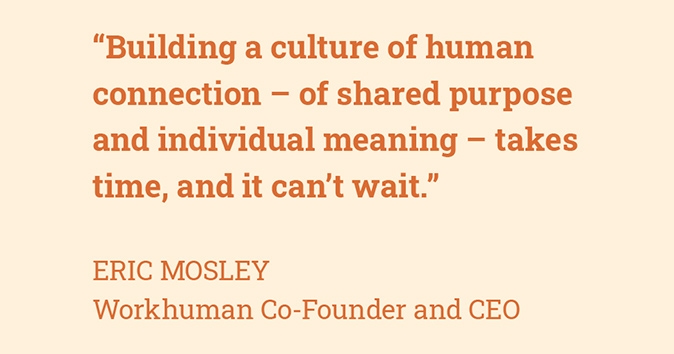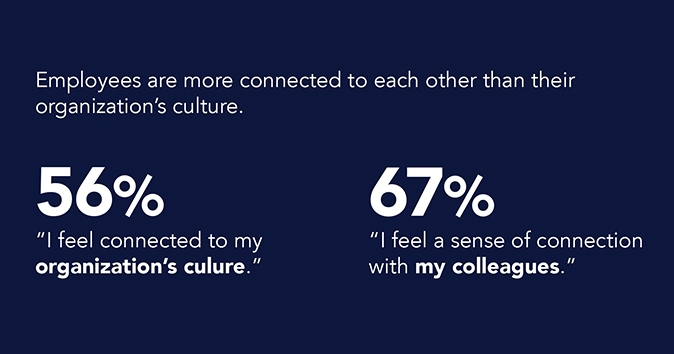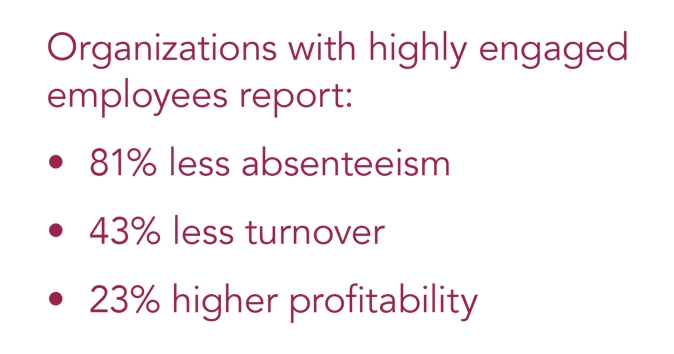What Is Informal Communication?: Types, Benefits, and Strategies
Table des matières
- What is informal communication?
- What are some examples of informal communication?
- Why is informal communication important?
- How can informal communication negatively affect the workplace?
- What are the 4 types of informal communication?
- What is the difference between formal and informal communication?
- FAQs
- Wrapping Up

Informal communication can help strengthen bonds in the workplace leading to more effective communication, happier employees, and decreased turnover.
In this article, we’ll answer the question: what is informal communication?
We’ll explain everything employers need to know about informal conversations in the workplace and cover the types and benefits of this communication.
What is informal communication?
Informal communication is the transmission of data and ideas through unofficial channels. These are outlets that indirectly relate to the business or organization.
This type of communication is much more flexible and casual than the formal variety. Because of that, it doesn’t have to adhere to the usual hierarchy of the business structure.
When you think of workplace communication, your mind goes straight to emails and official letters. Yet, we have to remember that workers are regular people. There is a basic human need to nurture and sustain friendshipsOuvre dans un nouvel onglet to feel connected, supported, and happy.
After spending a large portion of their waking hours with their colleagues, they inevitably develop bonds. They’ll make friends, engage in small talk that doesn’t pertain to work, and get to know each other as people outside their roles.
That’s where the idea of water-cooler talk comes from. It’s when coworkers meet up virtually or in person to discuss their lives, the weather, or current events.

What are some examples of informal communication?
Informal communication can come in many forms.
- Instant messaging: This is when workers send private messages among themselves on an application like Teams, Slack, or Gchat. The chats can include anywhere from two employees to hundreds of workers.
- Coffee breaks: This is when workers run into each other in the office or get together in a virtual setting. It gives them a chance to catch up and discuss ideas and other work-related activities.
- Team events: Companies will sponsor team lunches to help build a collaborative environment. While this is technically a work function, the employees won’t use emails. Instead, they’ll chat among themselves and share news informally.
- Peer communication: If a worker gets stuck while completing a task, they can ask around for help by pinging a colleague who might have an answer or helpful insight. They’ll talk to their coworkers in a casual way to find a way to resolve the issue without involving managers or leadership.
- Grapevine communication rumors: Grapevine rumors are when you receive information through informal communication channels. It’s usually a result of hearsay and office gossip.
- Open-door policy: Many managers offer an open-door policy or host virtual office hours. That means their subordinates can reach out to connect at any time and discuss issues they may face. Even though this relates to the business, these meetings are more informal by nature.
Why is informal communication important?
Now that you know what informal communication is, we can move on to the benefits. In this section, we’ll show you how this mode of communication can help your business.
Stronger workplace relationships
Informal communication can foster stronger relationships between employees. That’s because it opens up the door for connection over shared experiences.
When you talk to a coworker about your day or personal life, it creates a bond. This can lead to a sense of familiarity that puts you at ease when you see your work friend. Not only will that build a harmonious work environment, but it’ll also reduce stress in the office.
Besides that, stronger workplace relationships can improve workflow. Since your employees have friendly interactions, they won’t have an issue asking their coworkers for help.
This sense of comradery and support should streamline your business operations.

Increased productivity
It’s an outdated perspective to believe that relationships like these might break down the regular chain of command. That’s far from the truth.
Informal communication can enhance teamwork. Workers will create relationships with employees outside of their team or department. This increases opportunities for collaboration, which can boost the productivity of your business.
Informal communication can improve feedback management. Employees will share ideas and constructive criticism about the business, processes, or other challenges in a comfortable and relaxed environment.
Lower turnover rate
Informal communication can make conflict resolution easier to navigate. When you encourage your staff to discuss challenges or issues openly, the company can address the problems before they escalate.
Your workers will feel like they’re a crucial part of your team. This can help your staff develop a sense of loyalty, which should reduce your turnover rate.
Casual communication will lead to friendships and an increased level of investment in the organization. These bonds provide workers with additional incentives to show up at the office. We’ve all found it easier to drive all the way to the office or log on during a tough time, knowing we’re spending time with people we enjoy and respect.
Find out how to build a connected culture as a new leader in this guide!

Easier communication
Since informal communication is more flexible and less structured, it’s less stressful to engage in. You won’t have to worry about syntax or using proper terminology. This can make relaying complicated messages easier.
How can informal communication negatively affect the workplace?
Informal communication can help your business in many ways. However, there are a few potential downsides to relying on this casual mode of information sharing.
In this section, we’ll talk about the negative effects of informal communication that employers and workers should be mindful of.
Can lead to misunderstandings
Because there are no set rules for how you transmit information, these communications can be expressed however the worker would like. While this gives workers more creative freedom, it can impact your workflow. That’s because your employees might rely on gestures, short-hand phrases, or inside jokes.
This might hinder communication because it creates more opportunities for misunderstandings. This may be due to cultural differences, emotional barriers, or expectations and prejudices.
Can lack accuracy
Since informal communication isn’t on the record, misinformation is quite common. In a large corporation, rumors can spread around like wildfire.
Plus, once the incorrect information is out there, it’s incredibly difficult to correct. This can lead to a sense of anxiety and erode trust between workers.
Not only will that cause more conflict in the workplace, but it can also disrupt productivity.
Can be a barrier to inclusion
With informal communication, it’s tough to ensure inclusivity. That’s because it’s based on personal connections.
Your workers will most likely only share information with their friends. So, it’s difficult to keep track of which employees are in the loop.
This is particularly apparent if you have remote workers or part-time employees. Since they don’t spend much time in the office, chances are they won’t have the latest news. That can lead to your staff feeling left out and marginalized. Not only will this lead to friction between workers, but it can also put a major damper on morale.
What are the 4 types of informal communication?
We can classify all the forms of casual information sharing into four categories. In this section, we’ll look at the different types of informal communication.
1. Gossip chain
Most of us are familiar with rumor mills, but we’re not sure how they start. Well, when it comes to gossip chains, there’s usually one person at the center of the discussion.
The informal communication will start with a single employee. They’ll learn information and spread it around the office indiscriminately.
They’ll tell any person who’ll listen, whether the rumor affects them or not. Because of that, gossip chain communication can disseminate information rapidly.
2. Cluster chain
Cluster chains are similar to gossip ones in many aspects. For starters, both originate from a single employee.
Other than that, this worker will spread the news to more than one colleague. Although, that’s where the similarities end.
While the gossip chain shares information indiscriminately, the cluster chain focuses on specific individuals.
The person who started the rumor will only share it with people directly affected by it. For example, let’s say one of your workers finds out you’re hiring a new sales associate.
So, if they relay this information to your sales team, we can call it cluster chain communication.
Even though this form of transmission can be effective, it can lead to groupthink. Unfortunately, that may cause discrimination in the office and a lack of creativity.
3. Single-strand chain
Single-strand communication is a group of one-on-one conversations that talk about the same topic. To make this easier to understand, here’s a quick example.
Let’s say that Employee A hears some interesting news about the organization they work for. So, they immediately run to their closest friend at the company, B.
After that, B reaches out to another worker, C, and shares the information. Next, the data makes its way to employee D, then E, and so on.
So, as the name suggests, this form of communication takes on the shape of a single strand.
There’s no limit to the reach of single-chain communication. The flow of information could keep going until everyone in the company hears about it.
Unlike cluster chain communication, single-strand can reach all departments of a business.
4. Probability chain
The probability chain is a combination of cluster and single-strand communication. The information flow starts with one person.
This individual will relay the data to a group of workers. Then, each employee will go out and share the information with their friends.
With this type of communication, the flow of information is usually random. This means it’ll follow the natural laws of probabilityOuvre dans un nouvel onglet. That’s where the name comes from.
What is the difference between formal and informal communication?
Characteristics of formal communication
Here are some of the most notable characteristics of formal communication:
- Plainly defined rules and regulations
- Clear chain of command
- Task-related
- Official and comes with documentation
- Can be oral or written
- Follows a singular prescribed path
- Adopts a formal tone and language
- Organizational messages free from personal information
- Completed routinely
- Structured format
- Conveys official business information and directives
Characteristics of informal communication
Here are some of the most notable characteristics of informal communication:
- Not professional in nature
- Uses friendly language
- Casual and spontaneous
- Doesn’t have a specific structure
- Flexible, adaptive, and dynamic in nature
- Builds relationships and makes social interactions easier
- Don't use official channels
- There’s no clear chain of command
Key differences between formal and informal communication
As you can tell from the previous lists, there are many differences between formal and informal communication. For starters, formal transmission relies on a chain of command and a rigid hierarchy. That means employees will only communicate with their direct superiors about their daily tasks.
This doesn’t apply to informal communication. Employees will be free to talk to anyone they like, regardless of their position in the company. Formal communication typically transmits information that deals with business operations. Any non-work-related talk is typically not included in these types of documents.
As for informal chats, they can discuss almost any topic. That may include employees’ personal lives or current events.
FAQs
Why is informal communication important in the workplace?
Informal communication can help employees build bonds with one another. That can lead to fewer conflicts in the workplace, which should boost productivity. It fosters a harmonious work environment. This should reduce your employee turnover rate.
What is the difference between a formal and an informal letter?
The main difference between the two letters will be in the language. With a formal document, you’ll need to use technical jargon and official formatting.
As for informal letters, your language can be a bit more casual. You can use simple terms and short phrases to get your message across.
Wrapping Up
What is informal communication? As we’ve learned, informal communication is when employees convey information and ideas through unofficial channels. We can divide this type of communication into four categories – these are gossip chains, cluster chains, single-strand chains, and probability chains.
Informal communication is beneficial to the workplace. It can boost productivity, reduce turnover rates, and build stronger workplace relationships. Ensure your organization is creating a positive workplace environment where informal communication and friendly relationships can thrive.